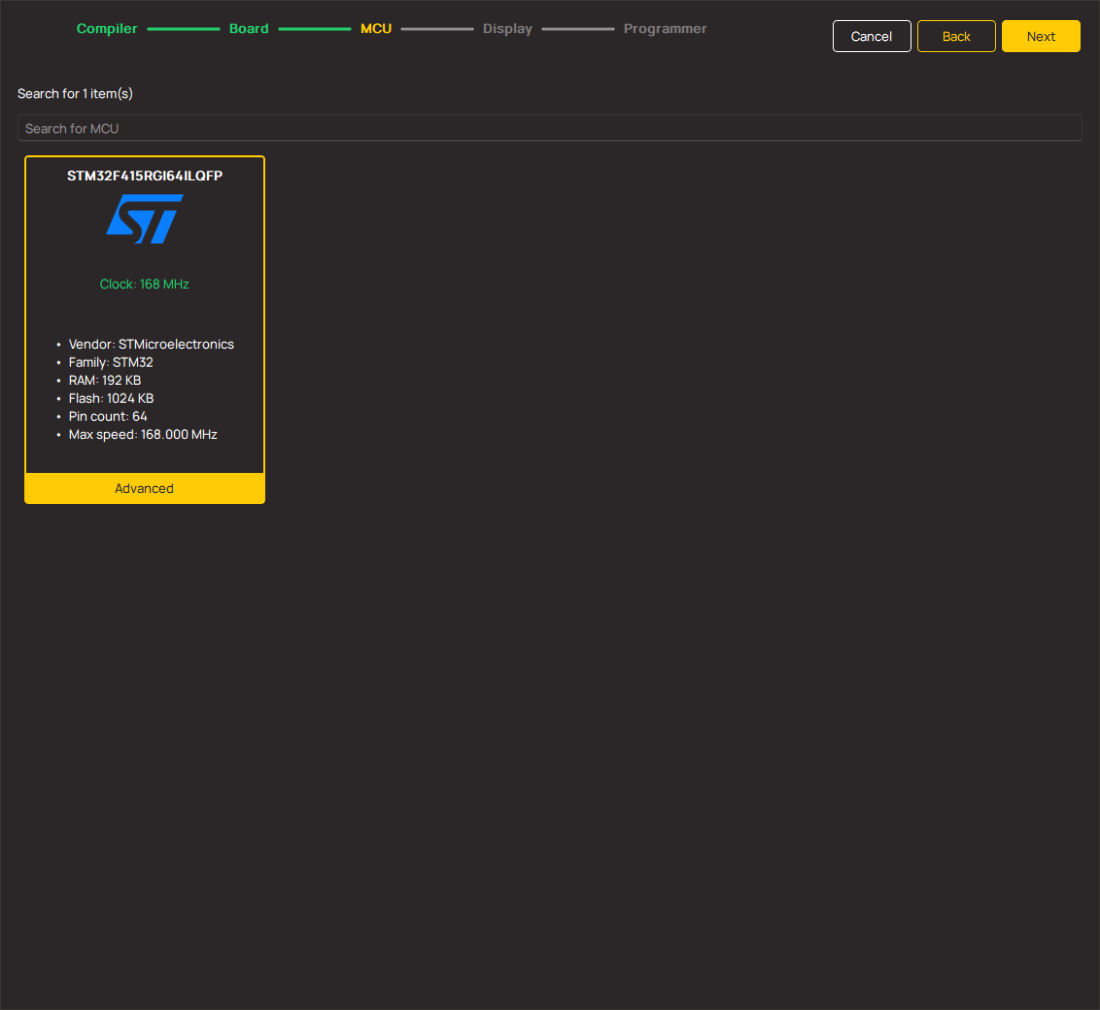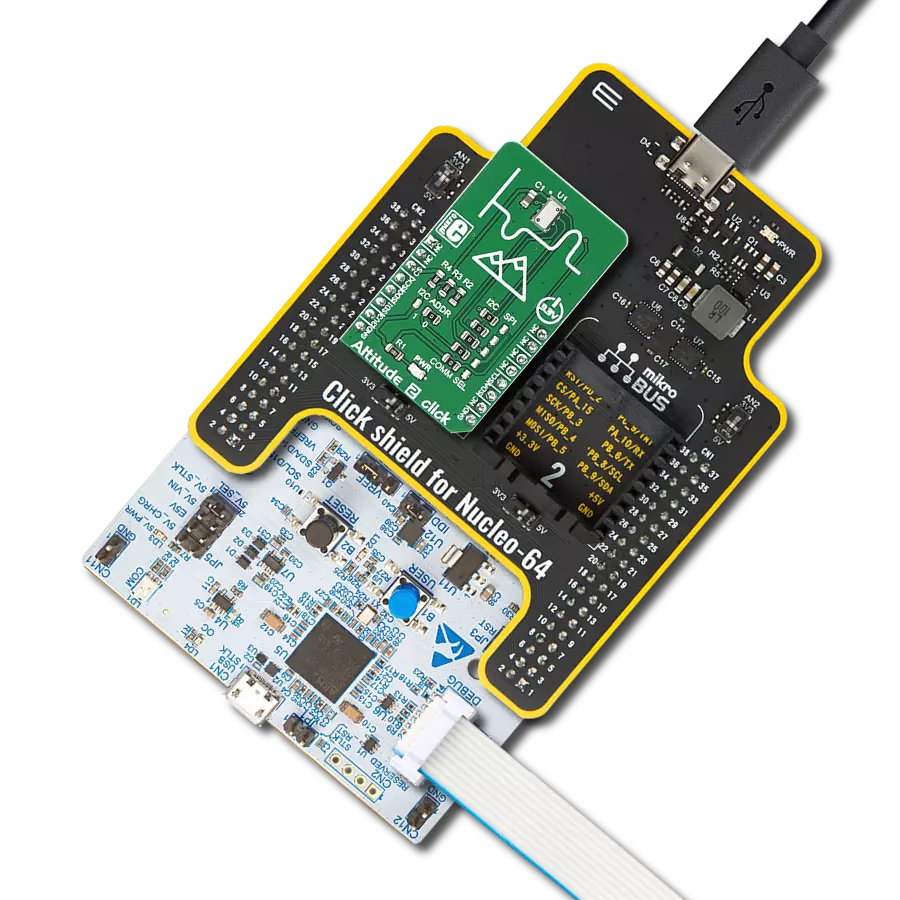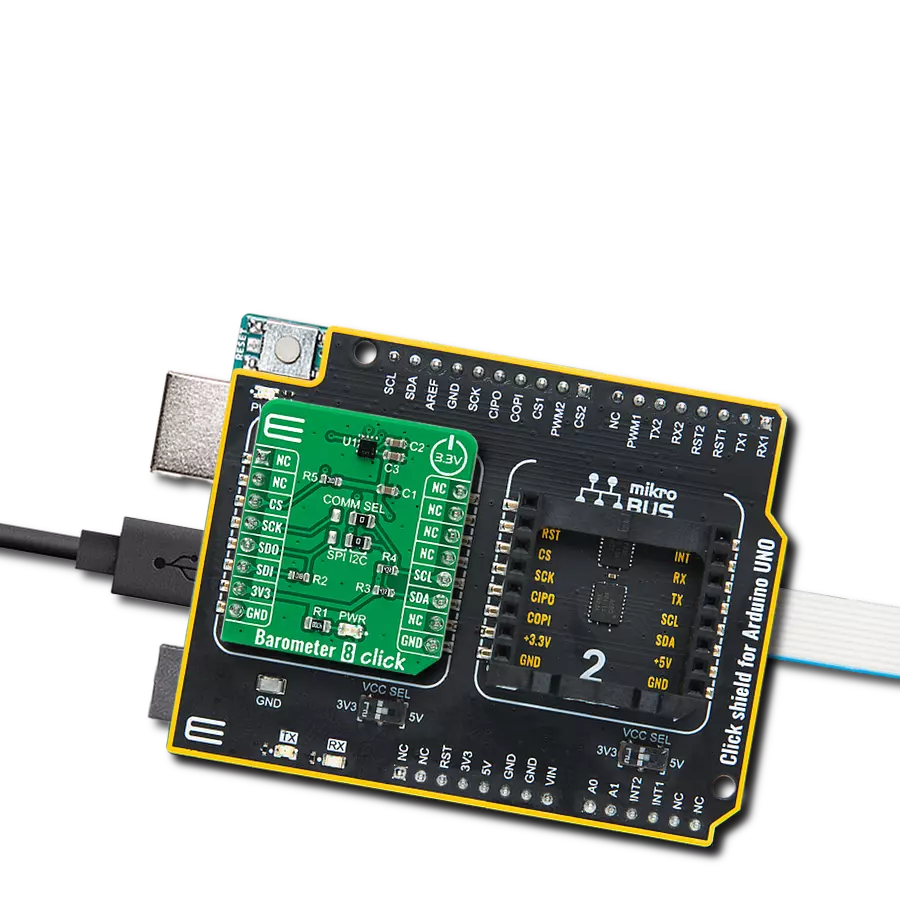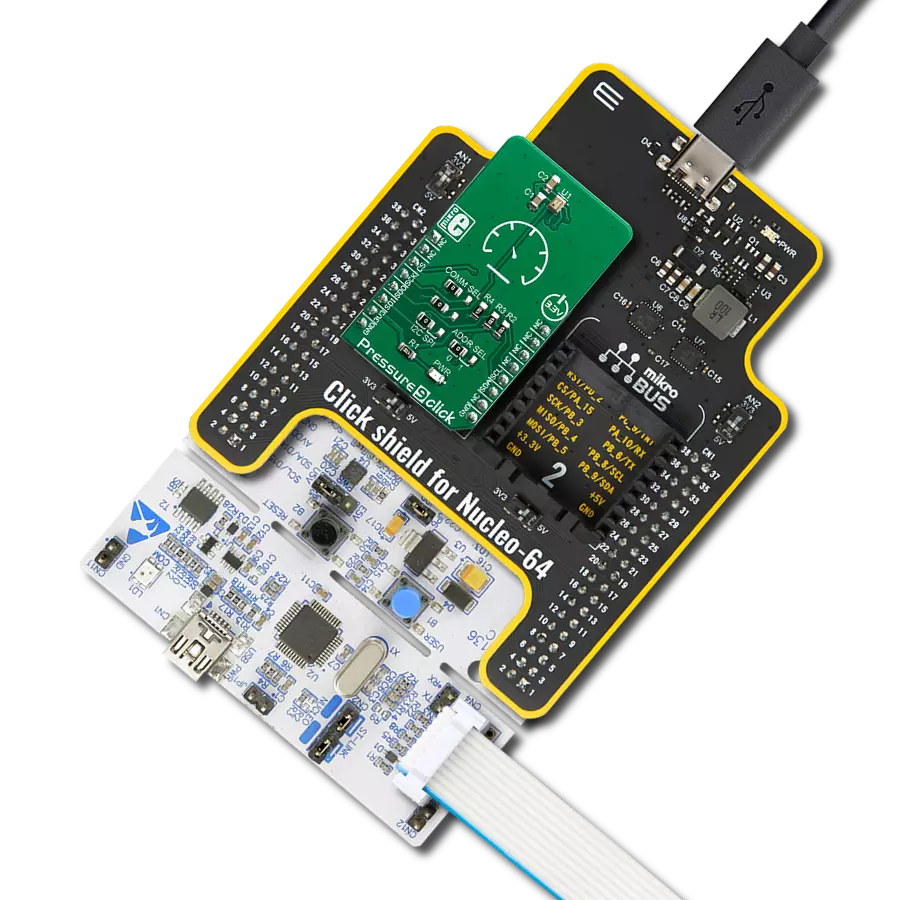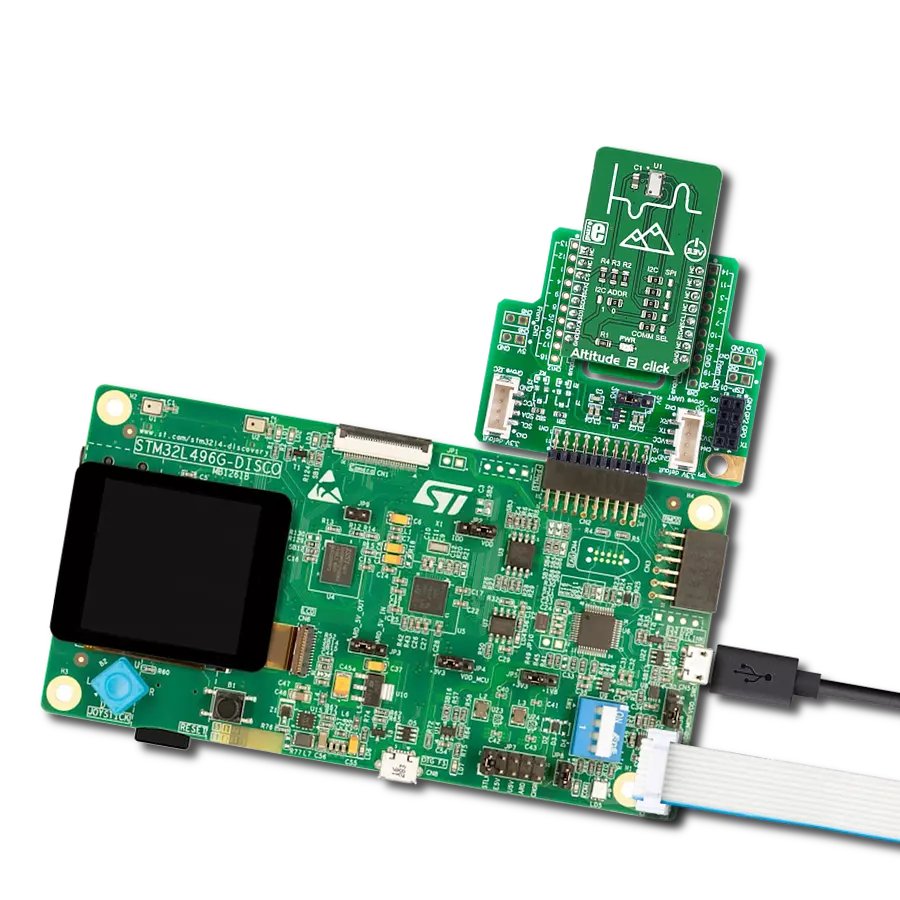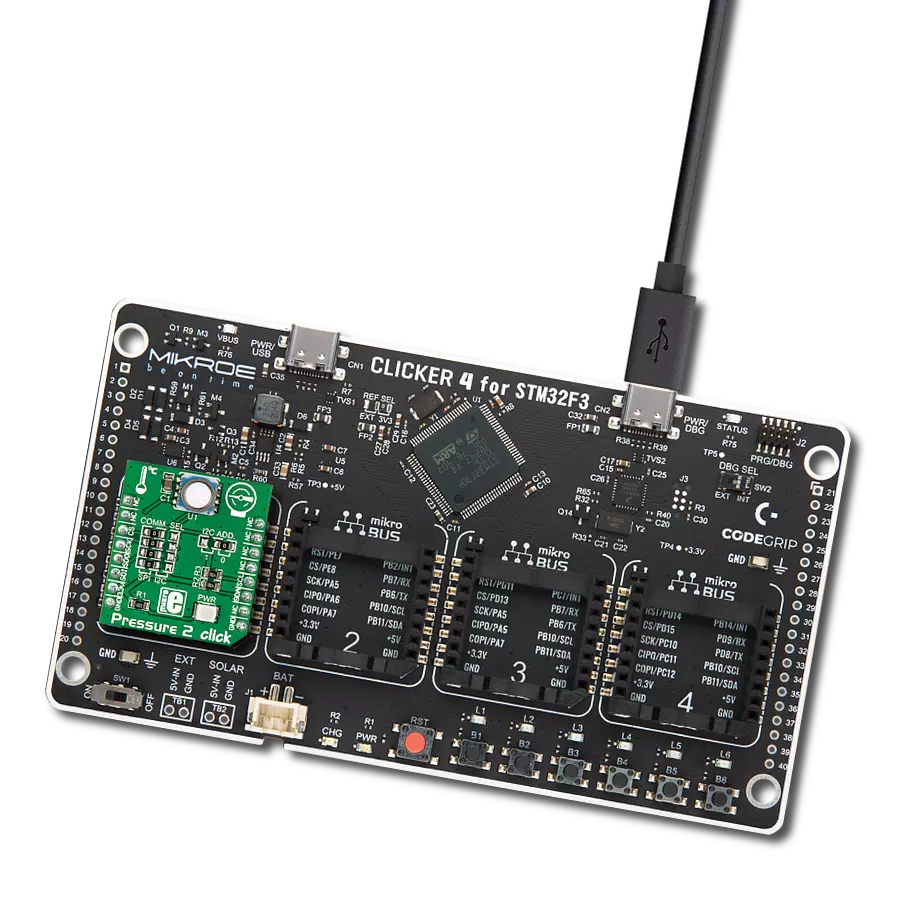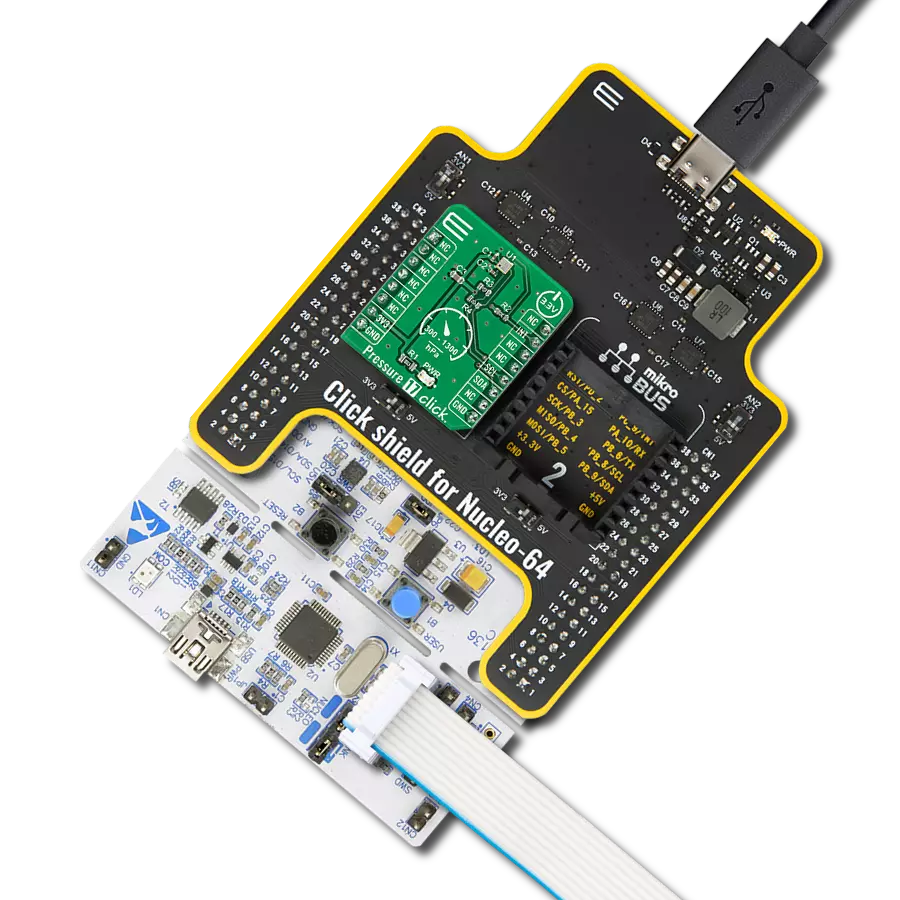Trust in our digital pressure measurement solution to enhance the efficiency of your operations, optimize resources, and maximize productivity
A
A
Hardware Overview
How does it work?
Pressure 9 Click is based on the DPS422, a digital barometric air pressure sensor from Infineon. It can be used to measure absolute pressure values from 300 to 1200hPa. The sensor contains a highly accurate capacity-based Micro Electro-Mechanical Sensor (MEMS), along with a high resolution 24-bit sigma-delta A/D converter (ADC). The MEMS also features a set of factory calibration parameters, stored into its OTP memory. They allow high-precision pressure and temperature data conversions to be performed, enabling results in physical units. By adjusting the oversampling ratio, the developer can find a perfect balance between the accuracy, speed (output data rate), and power consumption, in accordance to the application requirements. MEMS consists a set of tubular vacuum cells, covered by membranes. By applying a pressure, capacitance of the cell is changed proportionally. Several vacuum cells are connected in parallel, allowing for better sensitivity and less noise. The capacitance of the cells is measured and converted to a voltage which is sampled by the internal 24-bit ADC. The result is available over I2C or SPI interface, depending on the position of the COMM SEL jumpers. The conversion formula is then applied to the raw result value, providing
pressure and temperature values in human readable format. Pressure 9 click supports both SPI and I2C communication interfaces, allowing it to be used with a wide range of different MCUs. The communication interface can be chosen by moving SMD jumpers grouped under the COM SEL to an appropriate position (SPI or I2C). The slave I2C address can also be configured by a SMD jumper, when operated in the I2C mode: a SMD jumper labeled as ADD SEL is used to set the least significant bit (LSB) of the I2C address. When set to 0, the 7-bit I2C slave address becomes 0b1110110x. If set to 1, the address becomes 0b1110111x. The last digit (x) is the R/W bit. Please note that each jumper should be moved to the same position, else the communication with the host MCU may not be possible. One of distinctive features of the DPS422 is the FIFO buffer with 32 slots, allowing to buffer both pressure and temperature readings. The FIFO buffer can be used as a temporary storage for the incoming data, allowing for reduced data traffic through the communication bus. The FIFO buffer can be very useful for writing an optimized MCU firmware. The least significant bit (LSB) of the result stored within the FIFO buffer, determines if the stored
data represents pressure, or temperature (1 is used for pressure, 0 for temperature). A bit within the FIFO status register indicates if the buffer is full or if the watermark level has been reached. The FIFO buffer can also be disabled, allowing data to be fetched from the output registers, directly. Pressure and thermal data are available at the output, in 24-bit, two’s complement format. To convert the raw data into a human-readable format, the firmware of the host MCU has to obtain the calibration data. Calibration coefficients are then used within pressure or temperature conversion formulas. The required formulas can be found within the datasheet of the DPS422. However, this Click board™ comes with the mikroSDK compatible library of functions that simplify the firmware development. The developer is able to use simple function calls, which perform all the necessary data conversion, returning the pressure and thermal data in human readable format. This Click Board™ is designed to be operated by 3.3V logic levels only. A proper logic voltage level translation should be performed before the Click board™ is used MCUs which are operated at 5V.
Features overview
Development board
Nucleo 32 with STM32F031K6 MCU board provides an affordable and flexible platform for experimenting with STM32 microcontrollers in 32-pin packages. Featuring Arduino™ Nano connectivity, it allows easy expansion with specialized shields, while being mbed-enabled for seamless integration with online resources. The
board includes an on-board ST-LINK/V2-1 debugger/programmer, supporting USB reenumeration with three interfaces: Virtual Com port, mass storage, and debug port. It offers a flexible power supply through either USB VBUS or an external source. Additionally, it includes three LEDs (LD1 for USB communication, LD2 for power,
and LD3 as a user LED) and a reset push button. The STM32 Nucleo-32 board is supported by various Integrated Development Environments (IDEs) such as IAR™, Keil®, and GCC-based IDEs like AC6 SW4STM32, making it a versatile tool for developers.
Microcontroller Overview
MCU Card / MCU

Architecture
ARM Cortex-M0
MCU Memory (KB)
32
Silicon Vendor
STMicroelectronics
Pin count
32
RAM (Bytes)
4096
You complete me!
Accessories
Click Shield for Nucleo-32 is the perfect way to expand your development board's functionalities with STM32 Nucleo-32 pinout. The Click Shield for Nucleo-32 provides two mikroBUS™ sockets to add any functionality from our ever-growing range of Click boards™. We are fully stocked with everything, from sensors and WiFi transceivers to motor control and audio amplifiers. The Click Shield for Nucleo-32 is compatible with the STM32 Nucleo-32 board, providing an affordable and flexible way for users to try out new ideas and quickly create prototypes with any STM32 microcontrollers, choosing from the various combinations of performance, power consumption, and features. The STM32 Nucleo-32 boards do not require any separate probe as they integrate the ST-LINK/V2-1 debugger/programmer and come with the STM32 comprehensive software HAL library and various packaged software examples. This development platform provides users with an effortless and common way to combine the STM32 Nucleo-32 footprint compatible board with their favorite Click boards™ in their upcoming projects.
Used MCU Pins
mikroBUS™ mapper
Take a closer look
Click board™ Schematic

Step by step
Project assembly
Track your results in real time
Application Output
1. Application Output - In Debug mode, the 'Application Output' window enables real-time data monitoring, offering direct insight into execution results. Ensure proper data display by configuring the environment correctly using the provided tutorial.

2. UART Terminal - Use the UART Terminal to monitor data transmission via a USB to UART converter, allowing direct communication between the Click board™ and your development system. Configure the baud rate and other serial settings according to your project's requirements to ensure proper functionality. For step-by-step setup instructions, refer to the provided tutorial.

3. Plot Output - The Plot feature offers a powerful way to visualize real-time sensor data, enabling trend analysis, debugging, and comparison of multiple data points. To set it up correctly, follow the provided tutorial, which includes a step-by-step example of using the Plot feature to display Click board™ readings. To use the Plot feature in your code, use the function: plot(*insert_graph_name*, variable_name);. This is a general format, and it is up to the user to replace 'insert_graph_name' with the actual graph name and 'variable_name' with the parameter to be displayed.

Software Support
Library Description
This library contains API for Pressure 9 Click driver.
Key functions:
pressure9_get_pressure_data- Get Pressure data in mBarpressure9_get_temperature_data- Get Temperature data in Cpressure9_configuration- Writing data to the configuration registers
Open Source
Code example
The complete application code and a ready-to-use project are available through the NECTO Studio Package Manager for direct installation in the NECTO Studio. The application code can also be found on the MIKROE GitHub account.
/*!
* \file
* \brief Pressure9 Click example
*
* # Description
* The demo application displays the pressure and temperature
* measurement using Pressure 9 Click.
*
* The demo application is composed of two sections :
*
* ## Application Init
* Initialization the driver, test comunication, and performs the Click
* default configuration.
*
* ## Application Task
* Reads Temperature data in [C] and Pressure data in [mBar] and this
* data logs to the USB UART every 2 sec.
*
* \author Jovan Stajkovic
*
*/
// ------------------------------------------------------------------- INCLUDES
#include "board.h"
#include "log.h"
#include "pressure9.h"
// ------------------------------------------------------------------ VARIABLES
static pressure9_t pressure9;
static log_t logger;
static float temperature;
static float pressure;
// ------------------------------------------------------ APPLICATION FUNCTIONS
void application_init ( void )
{
log_cfg_t log_cfg;
pressure9_cfg_t cfg;
/**
* Logger initialization.
* Default baud rate: 115200
* Default log level: LOG_LEVEL_DEBUG
* @note If USB_UART_RX and USB_UART_TX
* are defined as HAL_PIN_NC, you will
* need to define them manually for log to work.
* See @b LOG_MAP_USB_UART macro definition for detailed explanation.
*/
LOG_MAP_USB_UART( log_cfg );
log_init( &logger, &log_cfg );
log_info( &logger, " Application Init " );
// Click initialization.
pressure9_cfg_setup( &cfg );
PRESSURE9_MAP_MIKROBUS( cfg, MIKROBUS_1 );
pressure9_init( &pressure9, &cfg );
Delay_ms ( 100 );
// Test comunication
uint8_t product_id = 0;
pressure9_generic_read( &pressure9, PRESSURE9_REG_PRODUCT_ID, &product_id, 1 );
if ( PRESSURE9_PRODUCT_ID != product_id )
{
log_error( &logger, "Read product ID." );
for ( ; ; );
}
pressure9_default_cfg( &pressure9 );
Delay_ms ( 100 );
log_info( &logger, " Application Task " );
}
void application_task ( void )
{
pressure = pressure9_get_pressure_data( &pressure9 );
log_printf( &logger, " Pressure: %.2f mBar\r\n", pressure );
temperature = pressure9_get_temperature_data( &pressure9 );
log_printf( &logger, " Temperature: %.2f degC\r\n", temperature );
log_printf( &logger, "-----------------------------\r\n" );
Delay_ms ( 1000 );
Delay_ms ( 1000 );
}
int main ( void )
{
/* Do not remove this line or clock might not be set correctly. */
#ifdef PREINIT_SUPPORTED
preinit();
#endif
application_init( );
for ( ; ; )
{
application_task( );
}
return 0;
}
// ------------------------------------------------------------------------ END















